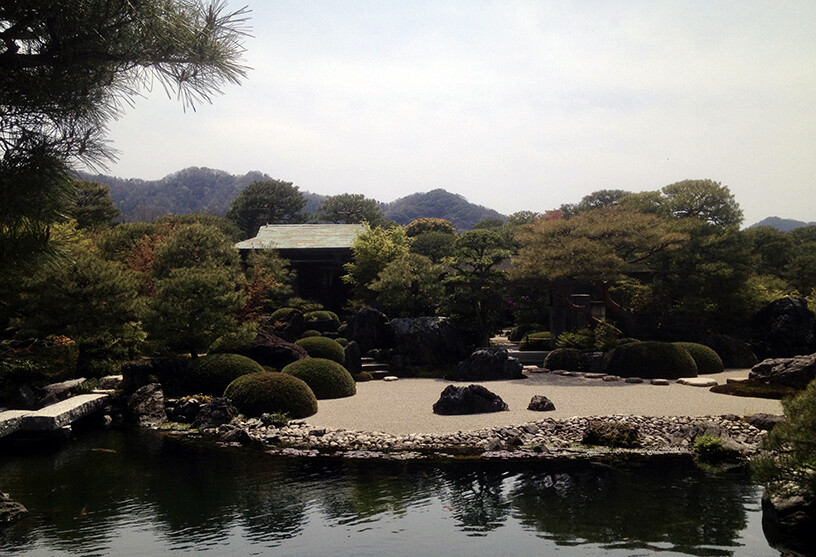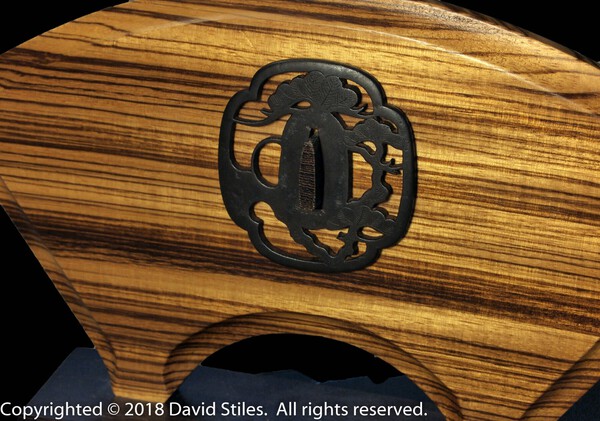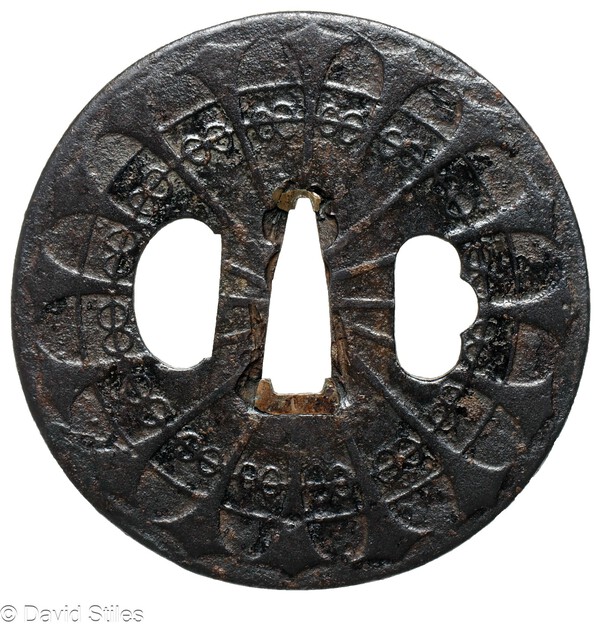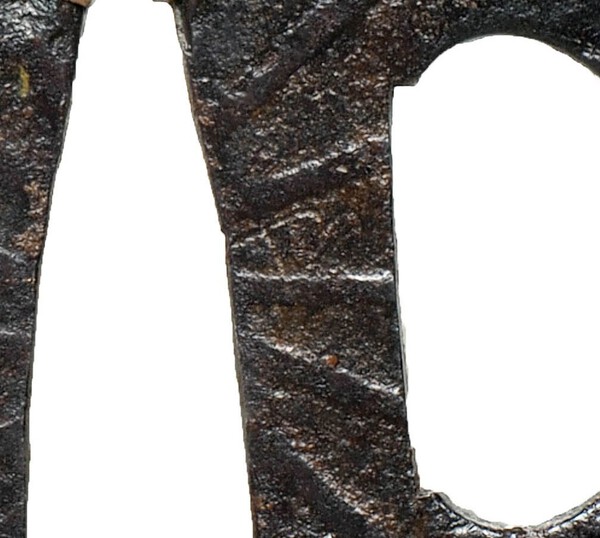-
Posts
2,904 -
Joined
-
Last visited
-
Days Won
3
Content Type
Profiles
Forums
Events
Store
Downloads
Gallery
Everything posted by Soshin
-
I really like the white ito wrap on your tanto handle. It is nice. I would agree with the Kyo-Kinko call but would also like to add the possibility of Kyo-Kanagushi as the maker of the fittings of tanto koshirae. I have had some nice oversized Kyo-Kanagushi menuki before so your large menuki could have also been made by that group of artists. I am trying to put together a koshirae for my Shinshinto Era tanto currently in shira-saya. I hope to get the handle for the koshirae for my birthday it also has white ito just like yours.
-
Okay, not projection then it its generalization by citing a few examples. This is meant as a joke and not disrespect, but I am intellectually curious how common this approach was historically when it came to Japanese sword and sword fittings artists working in their active periods.
-
That is one possibility, but you might also be projecting your own idea and emotions about the art you create as a hobby on a professional artist (that is what they did day in and day out) that lived many 100s of years ago in premodern or medieval Japan. There is also a cultural dynamic you might be missing as well. For example, swords made as offering at Shinto Shrines and Buddhist Temple generally speaking never being singed out of respect to the Kami or buddhas. Ultimately, we do not know for sure why some great works are never signed.
-
This was what I was thinking of in terms of a plain black stand. It looks nice without any carvings. I will send you an email.
-
Thanks for the comment. You have a nice sword from what I can see from the photos you provided. I'm not sure who made your sword, but I would say that it is likely part of the Mino Tradition like my sword is. The hamon (刃文) style looks more like a style or variation of straight (suguha 直刃) not in the Kanemoto School style like @Mark S. sword is. Did the later generations of the Kanemoto do other styles of hamon besides sanbonsugi (三本杉)?
-
I think I would need a special setup to take good photos of the nioiguchi. Not sure... Thanks everyone for replying and likes of my photos. This sword is a real joy to clean, oil, examine, and photograph.
-
The large Shoami group did not organize into regional schools (Aizu Shoami, Bizen Shoami, etc.) until the artists started moving out of Kyoto area into the castle towns of the various provinces. The artists of these regional schools had specific artist names that can be identified. These named artists represent the leaders of the peritubular regional school during the Edo Period.
-
Nice tsuba thanks for sharing. My answer to your quoted question above is No. I would tend to agree with the attribution of Aizu Shoami on the old NBTHK paper. These tsuba dated from Edo and therefore calling them Ko-Shomai isn't correct as that attribution is only associated with works older than the Edo Period and were produced in and around the capital of Kyoto. I had a tsuba papered to Ko-Shoami and it was stylistically and technically quite different.
-
I was doing a few different things around the house this afternoon including the cleaning my Japanese swords today before the seasonal change early next week and the coming of Summer. Here are some better photos of the Koto Kanemoto Katana that I received back from the polisher in February (previous topics are in this discussion group). I am no longer a Japanese sword dealer but can still take great photos. Here are a few resized for upload to NMB. Enjoy and feel free to discuss it politely.
-
I completely agree with this point, and it is critical to remember and keep it in mind as you collect. The attributed "Kodai Higo" tsuba lacks the excellent quality associated with the works of both artists Kamiyoshi Rakuju and Fukanobu. I have one papered Fukanobu tsuba in my collection and it is one of the best sukashi tsuba I have in my whole collection. It has punch marks around the nakago hitsu-ana so I will post a photo of it for reference. More information and photos can be accessed on my website: Tsuba Gallery #5 | Tsuba Otaku. It is the third tsuba on the webpage from the top as you scroll down.
-
Some nice Rai School swords. This school of the Yamashiro Tradition was discussed a few times this year at my Japanese sword club. I was able to make it to the meeting in May. Thank you for sharing a video about these fine swords.
-
I think the tsuba in question is very poor quality and was made for tourists and for the export trade. It is not likely even Edo Period and dates from the early to mid-part of the Meiji Period.
-
Hello Richard, Yes, that is what I was talking about. Here is a link to my website with information about that other tsuba with collector's mark: Tsuba Gallery #6 | Tsuba Otaku. It is the second tsuba from the top of the webpage. I paid Bruce K. for the images of the two pages of that book that have my tsuba. Thanks for the cover image of the tsuba oshigata book. I will add to my collection of information about that tsuba. I would also like to thank Steve M. providing a translation of the book cover, it is helpful.
-
Thanks, Grev, your tsuba is similar to my tsuba. The iron and workmanship look identical. The size of the tsuba is smaller at 7.4 cm high by 7.4 cm wide. It is 3.0 mm thick at the rim (mimi 耳). The thickness of the plate increases towards the center (seppa-dai 切羽台). Together they would be a great dai-sho set. I noticed that there isn't an extra mark on the ura side of the tsuba. What I might be looking at on my tsuba is not a marker's mark, but a collector's or owner's mark. I have another tsuba in my collection from an old Japanese collection that was published as a tsuba oshigata book during the Meiji Period. All tsuba in the book including my tsuba have a small collector's mark that is a circular red dot of lacquer of the same type at approximately the same place on the omote side of the tsuba.
-
I picked up this new tsuba at the Chicago show. I purchased it from Boris Markhasin of Tosoguya. The tsuba came with NBTHK Hozon paper attributing this tsuba to be a work of the Hoan school. I learned recently that the tsuba has a mark of the ura side along the right side of the seppa-dai from a Facebook post. Currently I am unsure what the meaning of the mark is. It might be a workshop mark but that is just speculation without conclusive evidence. I have seen another tsuba using the same technique with this similar type of mark before, but having more historical evidence would be nice. Many characteristics of the forged iron plate construction would point to an Owari Provience origin so I can understand the NBTHK call to Hoan. I have read that not all Hoan tsuba were signed especially in terms of the first generation and second-generation work. More photos can be accessed on my website here: Tsuba Otaku | Reflections of a Not So Empty Mind. Here are three images.
-
Having a well-made plain design stand for both a smaller and larger tsuba would be a nice option in my opinion.
-

NY Token kai
Soshin replied to Stephen's topic in Sword Shows, Events, Community News and Legislation Issues
To move this post to be back on topic, the New York Token Kai regular scheduled meeting yesterday was a very enjoyable experience. The meeting was well attended, the weather was genuinely nice. If you live anywhere with a 3–4-hour bus or train trip away from New York City I would recommend attending a club meeting. Highlights of club meeting included a presentation by Markus Sesko on the swordsmiths of late Rai School of the Yamashiro Tradition and Michael Shane experience on this trip to Japan to doing various Japanese sword related actives. I brough the two new acquisitions to my collection and one tsuba that had recently received a Tokubetsu Hozon appraisal paper from the NBTHK. Check the website of the New York Token Kai for all future club meetings (direct link below). Meetings (ny-tokenkai.org) -
The storage of the tanto looks fine to me. I generally like to inspect and oil my blades at minimum four times a year as the seasons change. If I examine the sword or show someone the sword I will clean off old oil and reoil the blade before putting it away. Where I live the temperature and humidity levels change with the seasons.
-
This is an important bit of information. The development of red rust so quickly indicates that surface of this tsuba was never in a stable state like you see on many antique tsuba that has a stable patina on its surface containing primarily black rust.
-
From my experience of having owned some papered Kanayama and Ko-Shōami tsuba, what is most important in telling the difference is the detail and characteristics and the distribution of the forged iron. What I have seen in Kanayama tsuba that are thicker at the rim and thinner toward the seppa-dai and that they would have rounded square rims (kaku-mimi-koniku 角耳小肉) versus a more pain round rim (丸耳). Also, with Kanayama you would have many large iron-bones (tekkotsu 鉄骨) appearance the of the iron bones. I see that in your Kanayama tsuba example above along with the large strong iron bones along the rim. Thank you for sharing your nice Kanayama tsuba.
-
The very last photo I can see the true yakiba ( 焼き刃) more clearlly from habori polish. The shape of the temper pattern is a saka-gunome (逆互の目) that is low and close to the edge. I would agree @Matsunoki attribution to Mino-den and would add that the tanto is likely one of Sue-Seki schools circa the late Muromachi Period. I hope you find this additional information helpful.
-
While the nakago looks worked on and adjusted a fair amount. This is an unfortunate widespread practice of Japanese sword dealer the world over. I would tend to agree with many of Ray Singer's comments. Nice Tanto with great ji-hada which you would expect to see in a Nao Shizu School sword. Thank you @MJS for sharing.




.thumb.jpg.0cf07a5b6d1165ae56aa7ab3dc23b16e.jpg)
.thumb.jpg.8d1dcf5c1ddab2387d7fbb54c4971a45.jpg)








